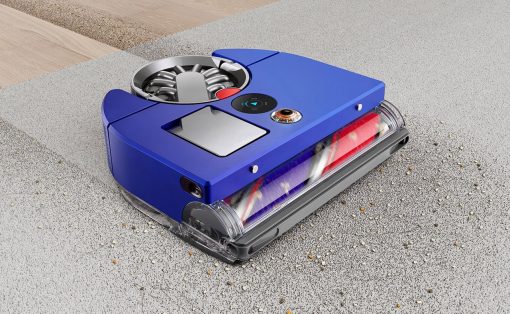![]()
Happily Haptic Lab is an exploratory research project that seeks to replicate common haptic sensations and create new ones for a modular chassis that functions as the main game controller.
Haptics, the science of touch, makes or breaks the gaming experience. Haptic technology involves the sensation of 3D touch and incorporates sensory experiences through vibrations, forces, and motions that coincide with video game narratives.
Designers: Jonathan Low and Ye JJ
![]()
![]()
Each 3D sensation signals to gamers different cues in the video game that keep the narrative going. Recognizing the potential of haptic touch in relation to gaming, two designers took on an exploratory research project, Happily Haptics, to combine common haptic actions with new technology and modular design.
![]()
![]()
Seeking to replicate popular haptic actions and produce new ones, Happily Haptic consists of a base chassis that hosts a grid of haptic modules, each of which carries a distinct function. The ultimate vision for the design duo boiled down to creating new modular, MIDI controllers with customizable haptics that were developed using a 3D printer.

![]()
Speaking to the concept’s purpose, the designers note, “We sought to replicate common haptic actions and create new ones using a standardized set of materials, consisting of 3D printed parts, magnets and hall effect sensors that allowed us to translate motion into a digital response.”

![]()
Each module that comprises Happily Haptics achieves haptics sensations through embedded magnets, springs, and switches that coordinate together to produce sensory experiences such as vibrations, jolts, and shakes.
![]()
![]() Consisting of 40 different modules, Happily Haptics was conceptualized in three different chassis sizes, ranging from a mini controller, a conventional-sized controller, to a large, MIDI controller, all of which are modular by design for users to customize as needed.
Consisting of 40 different modules, Happily Haptics was conceptualized in three different chassis sizes, ranging from a mini controller, a conventional-sized controller, to a large, MIDI controller, all of which are modular by design for users to customize as needed.
![]()
3D printed parts, magnets,e and hall effect sensors allowed the deisgners to translate motion into a digital response.
![]()
The designers developed each haptic system within a 3D printed cylinder 30mm in diameter, where magnets could be strategically embedded and swapped in order to vary actuation strength.
![]()
![]()
The collection of modules allows users to customize their gaming controller as needed.






